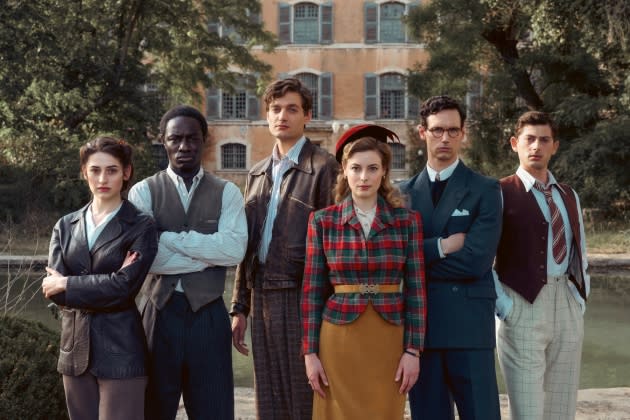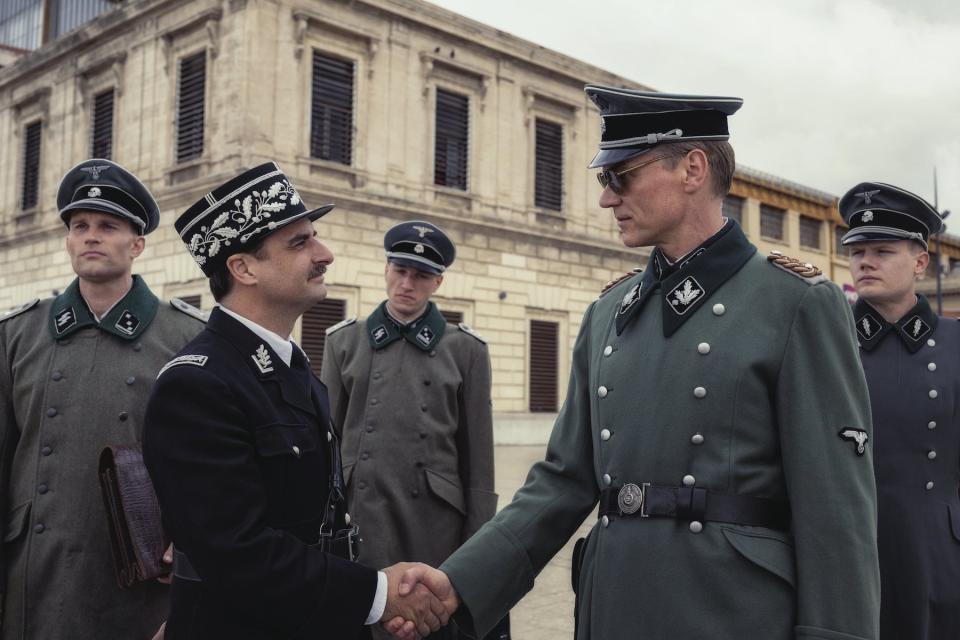‘Transatlantic’: The Daring Rescue of Jews From Nazi-Occupied France
- Oops!Something went wrong.Please try again later.
- Oops!Something went wrong.Please try again later.
- Oops!Something went wrong.Please try again later.
- Oops!Something went wrong.Please try again later.

TV shows and movies inspired by real-life events tend to overstate the truth for dramatic effect. Netflix’s Transatlantic is a rare case of underplaying history — in this case, the work of Varian Fry, Mary Jayne Gold, and the rest of the European Rescue Committee, who worked to get Jewish refugees safely out of Europe in the early days of World War II.
In reality, Fry, a journalist, and Gold, an heiress, helped the ERC smuggle more than 2,000 refugees — many of them great artists and intellectuals like Marc Chagall and Hannah Arendt — out of France. The seven-episode miniseries, adapted by Unorthodox and Deutschland 83 creator Anna Winger, from Julie Orringer’s novel about Fry, only covers a period where they were able to save a few hundred. If you don’t know the story going in, you may be surprised by the end titles, which offer a more thorough list of their incredible accomplishments.
More from Rolling Stone
Even with the operation pared down, though, Transatlantic is an effective, crowd-pleasing thriller. It moves briskly, lays out the story and stakes cleanly, and has three strong and likable lead performances by Cory Michael Smith as Fry, Gillian Jacobs as Gold, and Lucas Englander as Albert Hirschman, a Jewish refugee who passes up a chance at escaping in favor of helping others get out.
“People think there’s nothing they can do to help, so they do nothing,” Albert laments in the first episode. This is a show about a group of people who decided to do something, and accomplished that through ingenuity, willpower, and a fair amount of Gold’s trust fund.
Shot beautifully on location in Marseille, where the ERC operated in 1940 and 1941, Transatlantic opens with Albert and his sister Ursula making it to Marseille. They are assimilated Jews who had never thought much of their heritage prior to the rise of Hitler and the Nazis, and are part of a growing group of refugees who find themselves on the beaches of Marseille right as the collaborators in the Vichy government have made it all but impossible for them to leave the country.
Mary Jayne is introduced cleverly as a woman who would literally give the clothes off her back to someone in need, swapping her fabulous yellow dress(*) for Ursula’s filthy and tattered one, and then offering to pay for her and Albert to be smuggled out in the cargo hold of a departing ship. She and Varian are presented as uneasy partners, taking wildly different approaches toward the same goal. She will cut every corner and break every law in order to save people, while he believes that following the rules — even if they are increasingly oppressive and nonsensical — will ultimately allow them to accomplish more than if they piss off isolationist American consulate officer Graham Patterson (Corey Stoll, doing his familiar weasel thing as strongly as always) and local cop Philippe Frot (Grégory Montel).
(*) Jacobs’ period wardrobe is wonderful, and the dresses, hats, and pin curls do a solid job of obscuring the fact that she sounds much more contemporary than her co-stars. She’s excellent otherwise, though, and it’s better for her to sound like herself than to try some affected period voice that would just come across like a bad Katharine Hepburn impression.
It should not surprise you to realize that Winger is more on Mary Jayne’s side than Varian’s, and that much of the series is about him recognizing — with both her help and that of ex-lover Thomas (Amit Rahav) — that the cause requires them to employ every means necessary. But if it’s a predictable emotional journey for him, it’s also a potent one, especially as the show establishes how many others joined the effort, from resourceful hotel concierge Paul Kandjo (Ralph Amoussou) to Lisa Fittko (Deleila Piasko), a Jewish woman who discovered a mountain passage that would lead refugees safely over the border into Spain.
Because the story is primarily about our heroes outmaneuvering the Vichy bureaucracy and American indifference to the plight of European Jews, there are long stretches that just show many of the refugees hanging around Marseille, waiting for Varian to obtain the necessary paperwork for them to flee. This means that the tension levels can wax and wane. Early on, for instance, it’s a near-fiasco when Patterson lets slip to Frot that many of the refugees are staying at the hotel where Paul works. But it later seems like no big deal at all when the authorities find out the refugees are now living at Thomas’ huge country villa.

But even those slow periods have their charms. Winger and her collaborators never lose sight of the fact that most of the people on the ERC’s rescue list are artists, who think and act differently from more normal refugees like Albert and Ursula. In one episode, satirist Walter Mehring goes stir-crazy when Paul and Albert hide him in a hotel room for several days; eventually, he channels his frustration into a full-on, choreographed musical number parodying Hitler and his lackeys. And the show’s end credits — changing each episode, and worth watching rather than letting the Netflix interface jump you straight to the next one — are a marvelous series of moody, grainy, avant-garde black-and-white images of the cast in full costume behaving eccentrically in and around the villa. It feels like the sort of thing one of the refugees would have made if a movie camera and film were available.
That askew sense of humor is also well-deployed in passages that are otherwise more serious, like when Mary Jayne uses her dog to assist in a prison break. But when Transatlantic wants to play things entirely straight, it can be very gripping and tragic.
It’s a more basic and straightforward show than the kind many of its characters might have attempted. But the story is so irresistible that a largely traditional, by-the-numbers approach works just fine.
All seven episodes of Transatlantic are now streaming on Netflix. I’ve seen the whole thing.
Best of Rolling Stone

